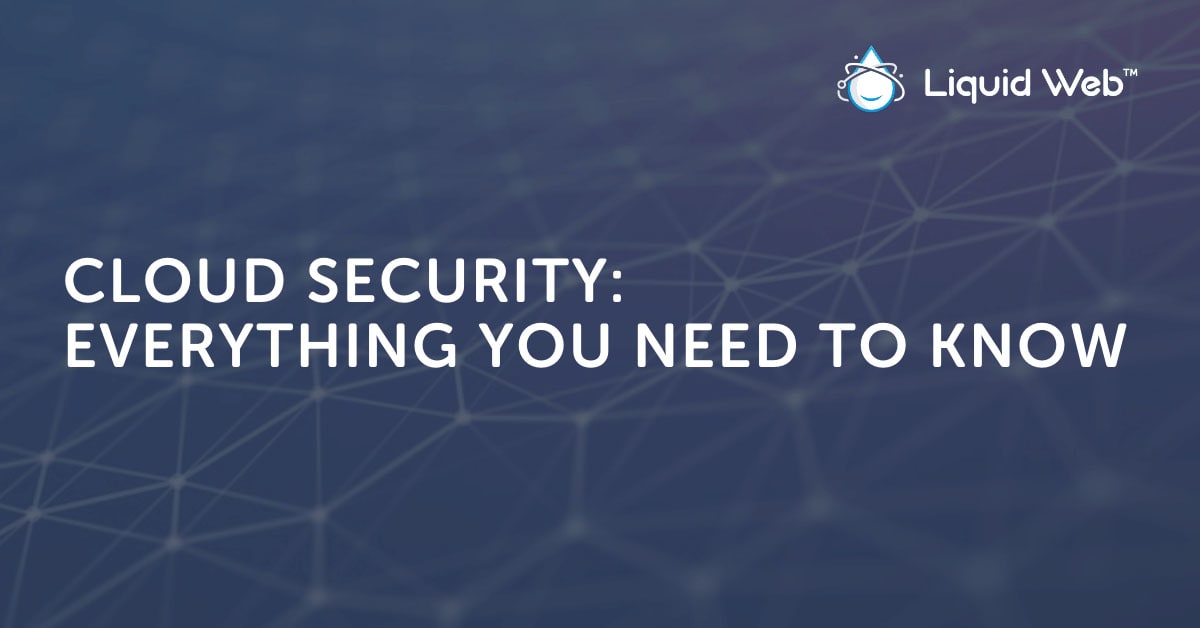
Several organizations are shifting to the cloud to modernize their enterprise networking environments. This includes leveraging the cloud’s flexibility and scalability to deploy server virtualization and other virtualization types, as well as to meet the demands of growing remote workforces.
As IT teams make the transition to the cloud, however, it’s important to recognize that traditional hardware-based security solutions can’t provide the protection this highly complex infrastructure needs. Adopting a cloud-first networking framework requires deploying a whole new security solution: cloud security.
Keep reading to learn how cloud security can keep your organization’s networking environments secure when migrating to the cloud.
What is Cloud Security?
Cloud security (or cloud computing security) is the collection of policies, controls, services, and technologies that protect cloud-based networking infrastructures. Along with virtualization security, a robust and effective cloud security solution keeps proprietary or confidential data safe, ensures regulatory compliance, and protects your organization against malicious attackers.
How Secure is the Cloud?
Overall, there’s a general sense that the cloud isn’t as secure as on-premises network architecture. But cloud computing can offer both a highly secure and dynamic framework when cloud security best practices are in place.
Just like other networking architectures, there are some security vulnerabilities and areas of concern associated with unoptimized cloud solutions, including:
- Larger Attack Surface: Migrating to a public cloud networking environment means dealing with a larger attack surface that cybercriminals can exploit. This is especially true as remote workforces grow and remote workers use unsanctioned personal devices and networks to access corporate apps and resources in the cloud. Attacks such as malware, Zero-Day, account takeovers, and Distributed Denial of Service (DDoS) are becoming more common in the public cloud daily.
- Low Visibility: IT departments and network administrators relinquish some control and visibility to the service provider when adopting cloud-based solutions. For example, several cloud service providers maintain control over the infrastructure layer and do not share it with their customers. This means IT or security teams would have a difficult time envisioning their entire cloud environment and assets.
- Dynamic Workloads: Assets in the cloud are spun up or decommissioned rapidly, meaning cloud environments are constantly changing. This calls for agility that traditional hardware-based security solutions are incapable of providing.
- Mismanaged Permissions: Security in the cloud enables granular controls over permissions. Unfortunately, these controls can be overwhelming and mismanaged by those who are unfamiliar with cloud-based infrastructures. A common pitfall of inexperienced IT or security teams is giving users more access to corporate resources in the cloud than they need to complete their jobs.
- Securing Hybrid or Multi Cloud Environments: Most enterprises don’t adopt a 100 percent cloud infrastructure. Instead, they deploy hybrid systems combining both on-premises hardware with cloud-based software. A security system that can effectively protect the hybrid system is required in these complex environments.
- Compliance: While several cloud providers are aligned with well-known compliance programs (e.g., GDPR, HIPAA, PCI 3.2, NIST 800-53, etc.), organizations are responsible for ensuring their data management processes and workloads are compliant. As cloud environments are ever-changing and complex, running compliance audits can be a difficult process without the correct tools in place.
The security of the cloud is also impacted by the environment it’s deployed in.

The Importance of Cloud Security
While there are some genuine security concerns when it comes to the cloud, deploying a strong cloud security solution in tandem with your service provider can address these vulnerabilities head-on. Cloud security can protect a cloud-based infrastructure and its assets by:
- Shrinking the Attack Surface: The cloud’s large attack surface is a big security concern—but through strategies such as workload micro-segmentation, the service provider’s cloud network can be split up into isolated chunks that do not communicate or interact with one another and feature their own granular security policies. This separation reduces the overall attack surface and keeps apps and data isolated from one another should one become compromised.
- Establishing the Principle of Least Privilege (PoLP): A staple of Zero Trust security—which is a key element of robust cloud security—is the ability to establish the PoLP for users and devices connecting to the network. With Zero Trust and PoLP deployed in the cloud, users are only granted the minimum access required to complete their tasks.
- Increasing Visibility: IT teams are often concerned with a lack of visibility in the cloud. Fortunately, there’s a higher level of visibility in cloud computing security than traditional on-premises security solutions can provide. In the cloud, IT can easily monitor the networking environment to ensure that users, devices, and applications or application programming interfaces (APIs) are not accessing resources or information they shouldn’t. The cloud can also provide more granular insights into potential points of vulnerability throughout the network.
- Providing Agility: Cloud security is designed to meet the dynamic needs of a cloud-based infrastructure, as well as the complexity of hybrid cloud or multi cloud IT environments. This is especially important as organizations undergo digital transformation, which requires a scalable security architecture that can adapt to complex threats in the cloud.
Understanding Cloud Security and How It Works
While robust cloud service providers typically offer built-in security features, partnering with a third-party cloud security vendor that delivers a comprehensive security stack is the easiest way to achieve advanced levels of protection. These vendors also give IT teams the ability to view their entire cloud infrastructure from a single pane of glass, as well as implement stringent levels of control based on corporate policies and compliance standards.
However, it’s important to note that both cloud service providers and organizations are responsible for the deployment of a robust cloud-based security perimeter.
Typically, the cloud service provider oversees the cloud infrastructure (delivered via Infrastructure-as-a-Service, Platform-as-a-Service, or Software-as-a-Service) and its configuration is protected.
On the other hand, an organization is responsible for:
- Its identity access management (IAM) policies and authentication.
- Data protection.
- Regulatory compliance.
5 Key Aspects of Cloud Security
Robust cloud security requires a fully integrated stack that features several key aspects:
1. IAM and Authentication
As essential aspects of a cloud security solution, robust IAM and authentication controls are required to establish Zero Trust and PoLP for your users and their devices. These allow an organization to create granular access privileges to corporate resources based on what’s required for each user to complete their jobs.
They also ensure higher levels of authentication for users who are given extensive network privileges. It’s also critical for organizations to enforce their own IAM policies simultaneously, such as promoting strong password security for all employees.
2. Asset Isolation
Cloud security tools must allow for asset isolation in the cloud that supports a Zero Trust framework. For example, IT teams should have the ability to partition their cloud network into isolated sections that feature their own resources and apps. In addition, the ability to use subnetworks and micro-segmentation to further isolate workloads (with each featuring its own Zero Trust security policies) is another important aspect of robust cloud security.
3. Next-Generation Cloud Web Application Firewalls (WAFs)
These cloud-based web application firewalls (WAFs) protect applications by closely inspecting and managing HTTP traffic before it gets to web application servers. With WAF security, organizations can stay protected against attacks such as cross-site scripting (XSS), SQL injection, web scraping, and advanced application layer DDoS.
Unlike traditional appliance-based WAFs, these cloud-native WAFs provide proactive (rather than reactive) threat detection, real-time app security insights, and help to ensure regulatory compliance is met.
4. Data Protection
Advanced cloud security solutions should provide automated cloud data protection, such as data encryption. This ensures data-in-motion or at rest is consistently encoded to prevent malicious attackers from capturing sensitive data as it routes to and from the cloud, or when data is accessed from cloud storage. A cloud security vendor should also provide cloud monitoring controls that allow them to easily discover, categorize, and monitor all data and apps in their cloud environment.
5. Artificial Intelligence and Machine Learning
Cloud security solutions that feature AI/ML can help to automatically detect and prevent intrusions or policy violations, as well as perform device posture assessments in real time to identify any malicious behavior or anomalies.
Who Needs Cloud Security?
Any enterprise transitioning to the cloud must have a solid plan of action in place for cloud security, as traditional hardware-based security solutions can’t keep up with these complex environments. Considering the security risks associated with the cloud, it’s critical for IT teams or security personnel to partner with a robust third-party cloud security provider, as well as have a comprehensive set of policies in place to keep employees secure and meet compliance regulations.
As your private cloud provider, Liquid Web takes measures to keep your infrastructure safe—such as managing security patches and updates and seamlessly integrating with your enterprise’s current cloud computing security architecture.
With Liquid Web, following and incorporating the key elements of security in cloud computing can ensure your entire network stays protected. Learn more about Liquid Web’s Managed Private Cloud hosting and how the agility, efficiency, and security of our private cloud infrastructure can benefit your organization today.
[ad_2]
Source link







